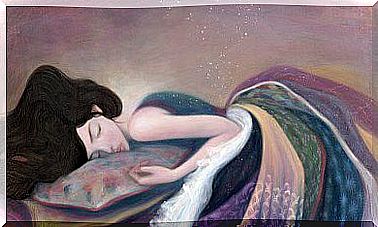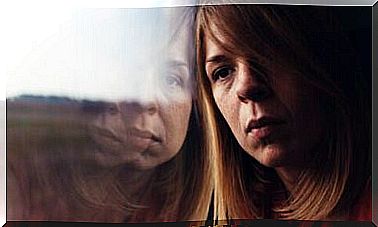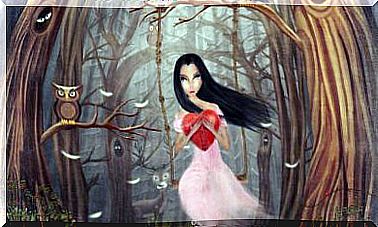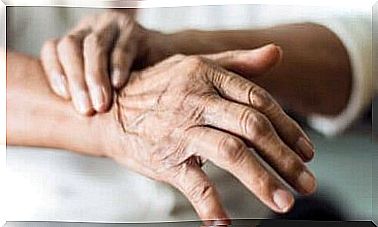Mary Wollstonecraft – The First Feminist

At a time when feminism was not as well known as it is today, when women had no place outside the home, Mary Wollstonecraft tried to change that. Mary Wollstonecraft, mother of Mary Shelley (who wrote Frankenstein ), was a unique woman: she was a philosopher, author, and feminist pioneer.
Unfortunately, Wollstonecraft was very controversial during her lifetime and many people criticized her ideas. She died shortly after giving birth to her daughter, due to an infection she contracted during her pregnancy.
After her death , her husband William Godwin (also a writer and philosopher) published her memoirs to try to keep her memory alive. Despite his efforts, people still remembered her only for the controversy that surrounded her. None of the intellectuals of the time had any higher thoughts about her.
Virginia Woolf and other contemporary feminists went to great lengths to restore Wollstonecraft because she was so misunderstood.
Mary Wollstonecraft: the first feminist
Her early life
Mary Wollstonecraft was born on April 27, 1759 in Spitalfields (London). Her family was financially well-off, until the father wasted all the family’s assets. In addition, he drank a lot and abused his wife. Mary made sure to be a constant pillar of support for her sisters.
She also advocated for women’s independence and defied the convention. Therefore, she even advised her sister Eliza to leave her family, but the world was not ready for this. At the time, it was an uncertain path to choose.
Wollstonecraft had two very significant childhood friends: Jane Arden and Fanny Blood. Both had a great influence on her life. Arden’s father was a philosopher and Mary followed in his footsteps. Fanny died after giving birth, which had a lasting effect on Mary.
Her adult life
After Blood’s death, Mary made the decisive decision to become a writer. The topics she first wrote about were the problems women were confronted with in the world of education and work. When she applied for a job, she realized that women had only two choices: to become a nanny or a governess. In addition, women’s education was much more limited than men’s.

Eventually she became a governess, but she gave the children a very unusual education. She wrote two books based on that experience: Thoughts on the Education of Daughters (1787) and Original Stories from Real Life (1788) .
She wrote the first book in a style that was very common at that time. What was unusual was that she wrote about single women and their lack of financial freedom. This was not a perspective people who lived during this time period expected to hear.
Later she got a job at a publishing house run by Joseph Johnson. There she worked as a translator and eventually published A Vindication of the Rights of Men (1790). It was a response to Edmund Burke’s Reflections on the Revolution in France (1790).
In this book, she attacks inherited rights, the aristocracy, and defends the idea of a republic. But this controversial book only gave a taste of what to expect…
Why do people consider Mary Wollstonecraft a feminist?
Mary Wollstonecraft traveled to Paris in 1792, during the chaotic period when Louis XVI was just to be executed in the guillotine. There, her life took a new turn. She published A Vindication of the Rights of Woman ( 1792), fell head over heels in love with Gilbert Imlay and had a child with him. However, she suffered from a deep depression when the relationship did not last.
This was in the 18th century; revolutions were going on and Wollstonecraft was a single mother. Upon returning to Britain, she tried to take her own life.
Paradoxically, for this strong woman, who so fiercely defended her own rights and her independence, was that she suffered from depression as a result of a romantic relationship. But calling Mary Wollstonecraft a feminist is also a bit tricky, because that term did not exist in her time.
However, if you read In Defense of Women’s Rights , you will notice that this is an early call to action. What exactly was she criticizing? First, she believed that love novels made women appear as if they had no thoughts of their own and were dependent on men. She also advocated that women should have the same rights as men, including education.
One of her main arguments was that women were not inherently inferior. She claimed that inadequate training was an important explanation. This was a position that practically all the thinkers of the time rejected. But Wollstonecraft actually went a step further.
At one point, she suggested that the painter and author Henry Fuseli should have an open relationship with both his wife and Mary herself. But this was at a time when polyamory was more than a taboo and this proposal had decisive consequences.

Her later years of life
Mary Wollstonecraft had a hard time overcoming her romantic disappointments. She wrote countless letters to Fuseli and tried again to take her own life.
In 1796 she published a book about some of her travels: Letters Written During a Short Residence in Sweden, Norway, and Denmark (Letters written during a short stay in Sweden, Norway and Denmark). She made the trip in an attempt to reclaim Imlay, but she realized that this was impossible.
In this book, she addresses various social issues and her own identity and her relationship with the world. Of course, she also speaks for women’s freedom and education. Towards the end, she accepts that her relationship with Imlay is over.
When she returned to London , she met William Godwin, a writer and philosopher whose ideas were forerunners of anarchism. They married and established some rules to respect Wollstonecraft’s independence. This meant that they lived in individual, but interconnected houses.
After the marriage, Mary began writing diligently again. Unfortunately, happiness did not last long. Mary died at the age of 38, shortly after giving birth to her second daughter, Mary Shelley. Godwin raised both daughters and later remarried.
After her death
In 1798 Godwin published the work Memoirs of the Author of A Vindication of the Rights of Woman . But as we mentioned earlier, it did not resonate much with the public. The book is a selection of her letters and other texts.
In today’s situation, what she says sounds completely logical. But at the time, it was controversial. The world was obviously not ripe for a woman like Mary Wollstonecraft.
Some people believe that Mary Wollstonecraft was the first feminist. And in a way, she was, even though she was not the first woman in history to demand rights. Feminism in the true sense of the word had not yet emerged, but her books contained some of the movement’s earliest ideas, which no one cared much about until the 20th century. It is to some extent thanks to Mary that women are what they are today.









